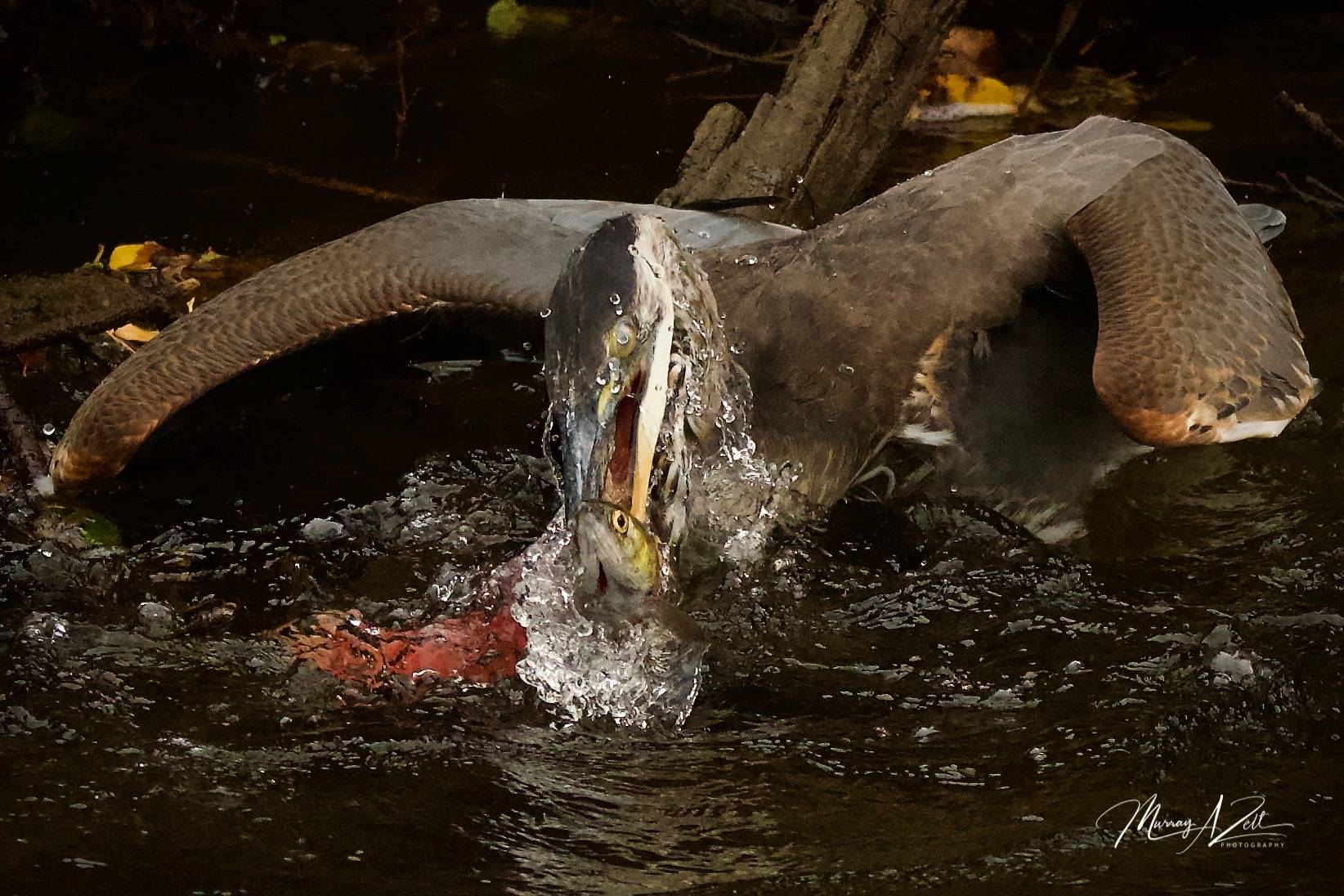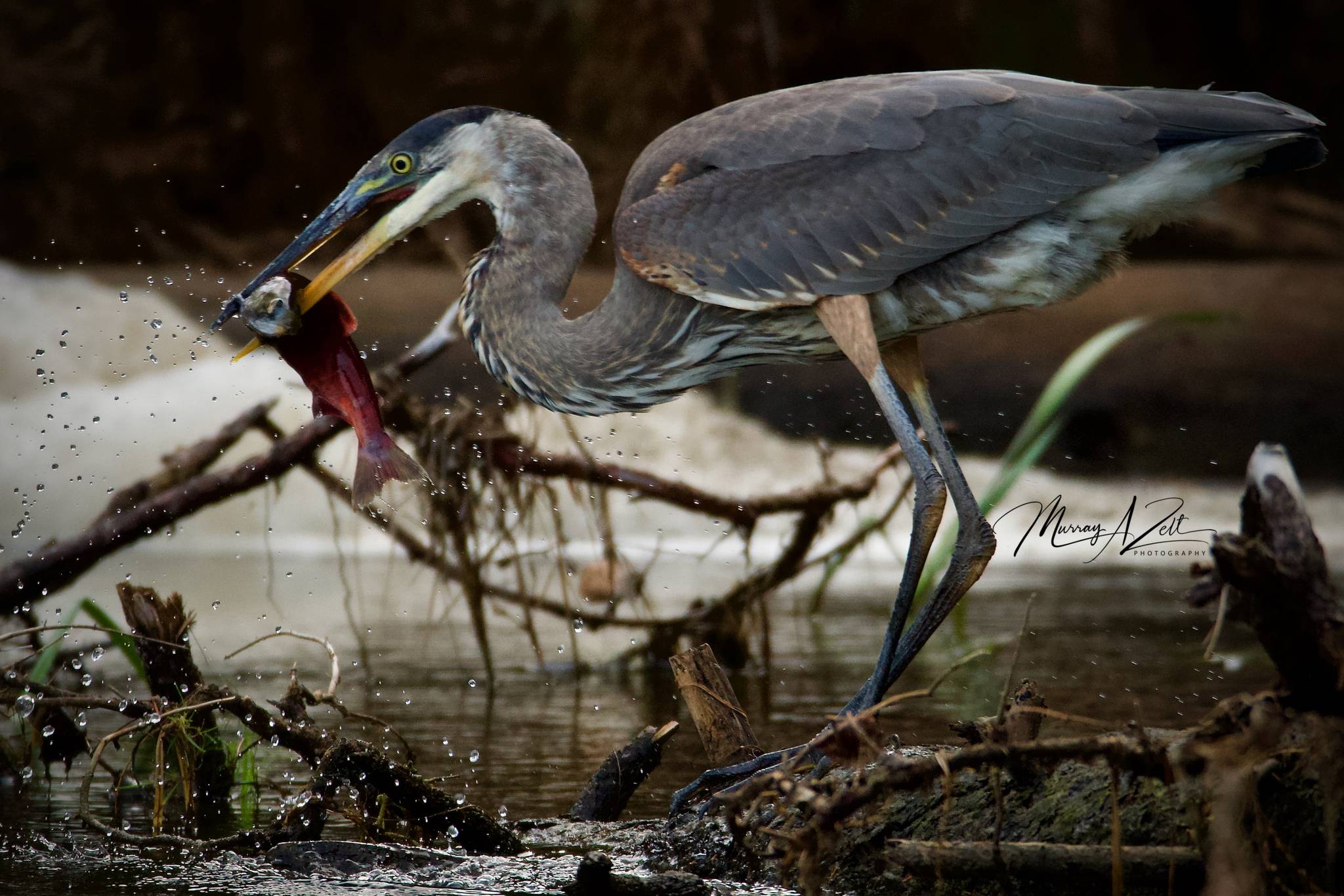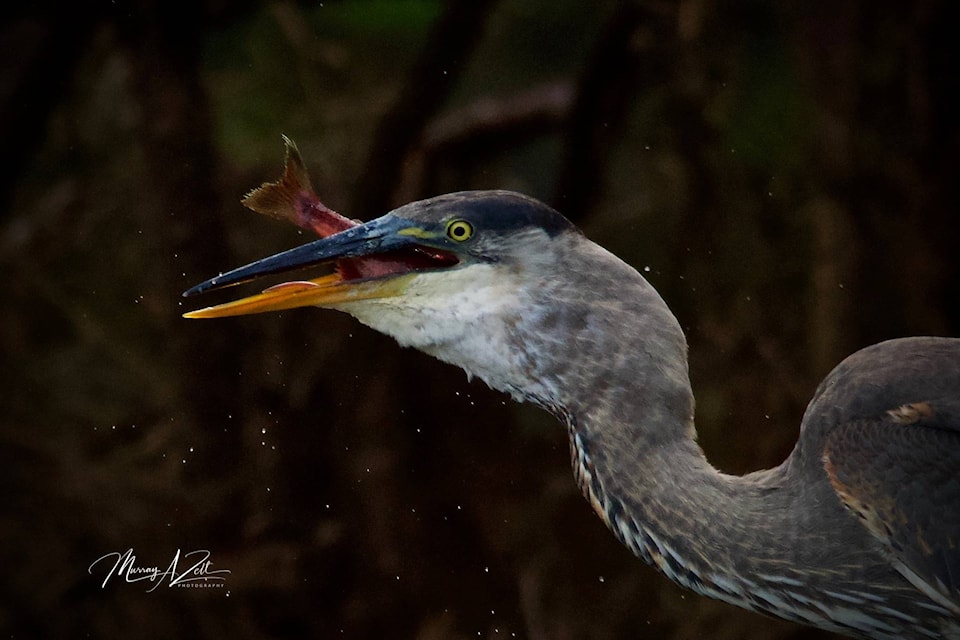Wildlife biologists will attempt to identify sites of the Northern Goshawk colonies in the Cariboo-Chilcotin next year while continuing to monitor habitats for other species at risk such as the Great Blue Heron, the American Badger and the Fisher.
Julie Steciw, of the Natural Resource Operations, Cariboo Natural Resource Region, last month provided an update to the Cariboo Regional District Board on the region’s species at risk and what is being done to monitor and protect them in the region.
She noted the Great Blue Heron, for instance, still has a lot of colonies west of Quesnel, near Williams Lake and in 100 Mile House, as well as a new colony at Chimney Lake, but it is hard to monitor them as they are sensitive to disturbances and may move if their trees fall down. Wildlife biologists also hope to identify habitat sites of the Northern Goshawk, which loves old-growth forests, mainly Douglas fir, pine and aspen.
“We’re trying to identify where some of these sites are,” Steciw said. “We don’t have a lot of information on them right now.”
The American Badger has been spotted a few times near Quesnel but is still endangered, mainly because it is at risk of becoming roadkill, while the Rusty Blackbird “population is really starting to crash.”
However, there are at least two Fisher colonies in the region now, she noted, while the Peregrine Falcon is seeing a comeback and there’s a “distinct population” of western painted turtles east and west of Williams Lake, 150 Mile and around 83 Mile Creek.
Biologists are also keeping better tabs on the American white pelican. Although it remains red-listed, leg-banding in the early 1990s has shown that birds from that breed in Williams Lake primarily stay west side of the Rockies all the way to Mexico. Steciw noted there are other biologists who deal with bigger species at risk, such as the Grizzly Bear and the caribou, as well as plant species.
CRD Chair Margo Wagner said it’s important to keep an eye on all species at risk. “We can only hope we can save the red-listed endangered species so that generations that come after us can enjoy them as much as we do,” she said.
Meanwhile, the information that moose, mule deer and elk are considered yellow-listed, or of “regional importance” drew some consternation from Al Richmond, Director for Lac La Hache-108 Mile, who said mule deer are multiplying like crazy in his community of 108 Mile Ranch.
“I have people calling for a cull on these things,” he said. “There’s more in my community today than when I built my home 40 years ago. We’ll send you a hundred or 200 or 300 if you want.”
newsroom@100milefreepress.net
Like us on Facebook and follow us on Twitter.


